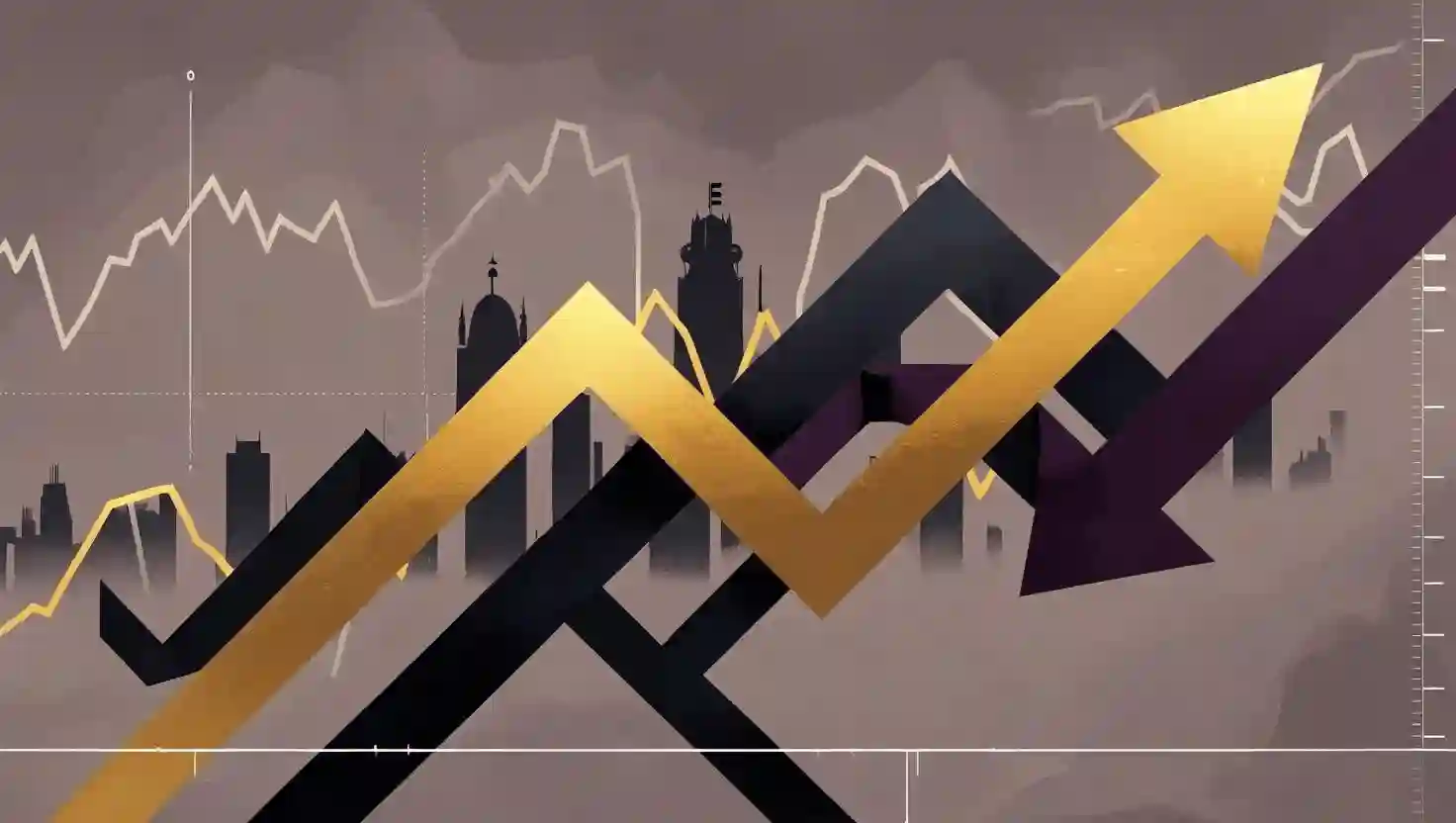In the dynamic and sometimes volatile world of the Indian stock market, timing your trades effectively can make all the difference between profit and loss. For retail investors, beginner traders, and young professionals keen to improve their technical analysis skills, understanding versatile tools like Bollinger Bands can significantly enhance trading decisions.
Technical analysis has gained immense popularity among Indian traders who seek to anticipate market moves through price charts rather than relying solely on fundamental factors. Stocks like Reliance Industries, HDFC Bank, and many others often exhibit periods of high volatility, making the right entry and exit points crucial for success. By the end of this article, you will learn how to read, interpret, and apply Bollinger Bands to Indian stocks. We will explore their calculation, practical trading strategies, and real-world examples from prominent Indian companies, helping you harness this powerful indicator to improve your trading outcomes in the Indian market.
What Are Bollinger Bands? Fundamentals and Calculation
Bollinger Bands Components: Middle, Upper, Lower Bands
Bollinger Bands were developed by the American financial analyst John Bollinger in the 1980s as a technical indicator designed to measure market volatility and provide signals based on price behavior. The indicator comprises three lines plotted on a price chart:
- Middle Band: This is the 20-day Simple Moving Average (SMA) of the stock’s price. It smooths out price fluctuations to show the average trend over the recent 20 trading days, a period well-suited for daily Indian stock charts.
- Upper Band: Positioned two standard deviations above the middle band, it represents a boundary that the price rarely exceeds during normal volatility.
- Lower Band: Located two standard deviations below the middle band, this marks the lower threshold in the price range.
These bands expand and contract depending on the volatility of the stock — wider bands indicate higher volatility, while narrower bands suggest consolidation or low volatility.
Calculation Basics
The bands are calculated using standard deviation, a statistical measure of price dispersion around the average:
The “2” here represents the number of standard deviations, which is a common default setting but can be adjusted based on trading needs.
Visualization: Example of Infosys
Consider the chart of Infosys. The middle band (20-day SMA) tracks the average price, while the upper and lower bands wrap around it. When the stock price touches or moves beyond these bands, traders get insights into potential trend reversals or continuations.

How Do Bollinger Bands Work? Trading Signals Explained
The ‘Squeeze’ and ‘Expansion’ Explained
One of the key concepts in Bollinger Bands is the “squeeze” — when the bands contract tightly around the price due to decreased volatility. This often signals that a significant price move is imminent, although the direction is not indicated by the squeeze itself.
Conversely, “band expansion” occurs when volatility increases, and the bands widen, typically accompanying strong price momentum either upwards or downwards.
Think of it as a spring being compressed (squeeze), ready to release energy in a burst (expansion).

Mean Reversion Principle
Bollinger Bands operate on the principle of mean reversion — prices tend to revert back to the mean or average over time. When the price deviates significantly outside the bands, it is often considered “overbought” or “oversold,” suggesting a possible reversal.
Interpreting Price Band Touches and Moves
- Touching the upper band: May indicate the stock is overbought; a potential sell or short signal if confirmed by other indicators.
- Touching the lower band: May signal the stock is oversold; a potential buying opportunity under favorable conditions.
- Price moving outside bands: Can mean either an upcoming reversal or the start of a strong momentum trend. Hence, confirmation is essential.
Setting Up Bollinger Bands on Indian Trading Platforms
Getting started is simple with most popular Indian brokerage platforms.
Recommended Settings for Daily and Intraday Trading
- Period: 20 (default setting for days)
- Deviation: 2 standard deviations (default)
- Use daily charts for positional trades.
- For intraday trading (5-minute or 15-minute charts), keeping the same parameters but attentive to faster market movements is beneficial.
Step-by-Step Setup on Zerodha Kite
- Open your chart for any Indian stock (e.g., Reliance Industries).
- Click on “Studies” or “Indicators” tab.
- Search for Bollinger Bands and select the indicator.
- Ensure period is set to 20 and standard deviation to 2.
- Bands will plot automatically on the price chart.
Platforms like Upstox and Groww offer similar straightforward setups, making this tool accessible to all retail investors without technical hurdles.
Common Bollinger Band Trading Strategies for Indian Markets
Let’s explore proven strategies, supported by Indian market examples, traders can adopt.
The Bounce Strategy: Range-Bound Market Examples
This strategy capitalizes on price “bouncing” off the bands within a tight range.
- Description: Buy when price hits the lower band and shows signs of reversal; sell when it hits the upper band.
- Best in: Sideways or consolidating markets.
Example: Consider Reliance in a range during 2022, where prices repeatedly bounced between upper and lower bands. Traders entering buys near the lower band enjoyed timely wins.

Breakout Trading Strategy with Real Stock Examples
When price breaks above the upper band or below the lower band with volume support, it often signals a strong trend continuation.
- Description: Trade in the direction of breakout beyond the band.
- Example: Infosys exhibited a classic Bollinger Bands breakout during its Q3 earnings season in early 2024—price surged above the upper band accompanied by high volumes, signaling a strong buy opportunity.
For deeper insights into breakouts, check out our internal guide on Mastering Breakout Trading: Strategies for Success.

The “Squeeze” Strategy
- Identification: Bands narrow sharply indicating low volatility.
- Trade Setup: Prepare for a breakout as prices are squeezed into a tight range.
Example: HDFC Bank in the chart shown earlier showed a notable squeeze before a breakout around mid September 2024. Traders anticipating the move caught the trend early.

Double Confirmation: Bollinger Bands with RSI and MACD
Combining Bollinger Bands with oscillators reduces false signals:
- Buy when price hits the lower band and RSI shows oversold (<30).
- Sell when price touches upper band and MACD histogram indicates bearish divergence.
Pros and Cons in Indian Context
| Pros | Cons |
|---|---|
| Adapts to volatility changes in Indian stocks | Can generate false signals in strong trending markets |
| Easy to visualize overbought/oversold zones | Needs confirmation from other indicators |
| Works well with Indian brokers’ charts | Requires trader discipline and risk management |
Mistakes to Avoid When Using Bollinger Bands
Trading Bollinger Bands effectively requires caution.
- Treating every band touch as a signal: Not every touch indicates a buy or sell. Combining with other confirmations like volume and momentum indicators is essential.
- Ignoring market trend: Using Bollinger Bands against a strong trend can lead to losses.
- Over-optimization: Changing period and deviation parameters excessively without backtesting can degrade performance.
For further insights on trading errors, our Common Mistakes in Day Trading and How to Avoid Them guide is highly recommended.

Tips for Maximizing Success with Bollinger Bands
Maximize your trading edge with these practical tips:
- Confirm signals with volume and momentum indicators like RSI and MACD.
- Risk management is key: Always set stop-loss levels and mind position sizes.
- Practice on historical charts: Use paper trading to gain confidence without risking capital.
Conclusion
Bollinger Bands are a versatile and powerful tool for trading in the Indian stock market when applied thoughtfully. They help traders interpret volatility, pinpoint potential price reversals, and time breakouts effectively. However, they work best when coupled with other indicators and sound risk management practices.
We encourage you to experiment with Bollinger Bands on your preferred Indian stocks, share your experiences in the comments, and ask any questions you may have. To stay updated with more insightful stock market tips and strategies, subscribe to the Stockastic blog and join a community passionate about smart trading in India. Happy Trading!
Frequently Asked Questions (FAQs)
Bollinger Bands consist of three lines plotted on a stock chart: the middle band (a 20-day Simple Moving Average), and the upper and lower bands set two standard deviations above and below the middle band. They expand and contract based on market volatility, with calculations involving the SMA and standard deviation to measure price dispersion.
Prices touching the upper band may signal overbought conditions suitable for selling or shorting, while touches at the lower band can indicate oversold conditions suited for buying. The bands’ expansion suggests increasing volatility and potential trend strength, whereas contraction indicates consolidation and possible upcoming breakouts.
Strategies include the bounce approach (buying at the lower band and selling at the upper in range-bound markets), breakout trading (trading on strong moves beyond bands), and squeeze trading (anticipating breakouts after the bands tighten). Combining Bollinger Bands with other indicators like RSI or MACD enhances signal accuracy.
They can highlight volatility expansion and potential trend changes, but during extreme news-driven moves (like in Adani stocks), false signals may increase. Always interpret signals in the context of market news and combine with volume and other indicators.

